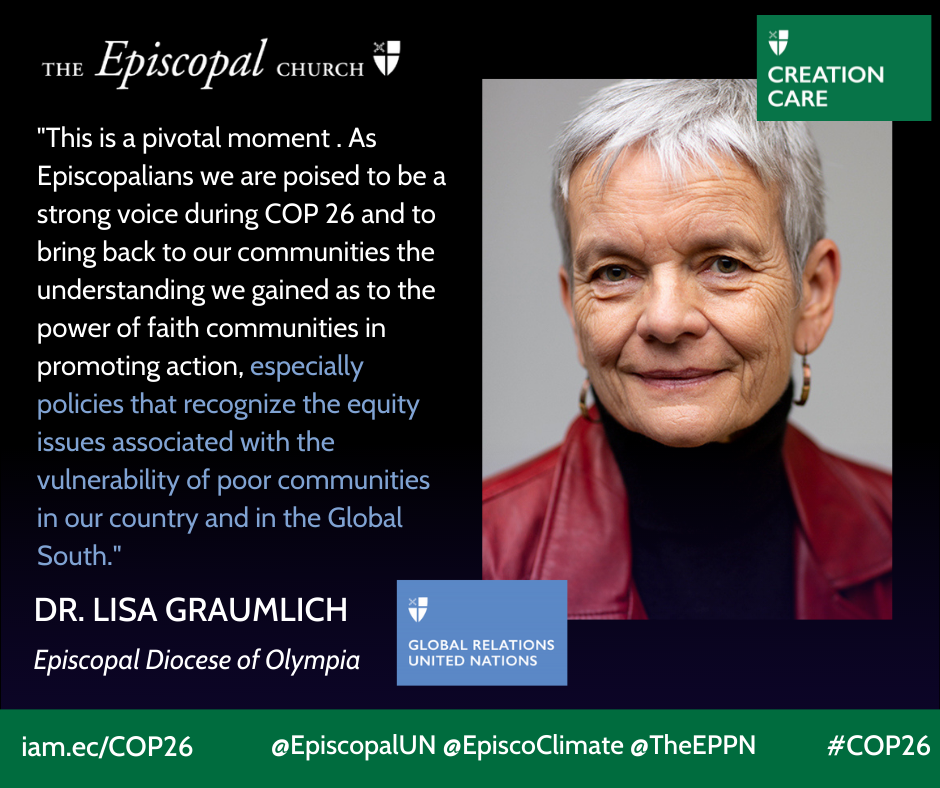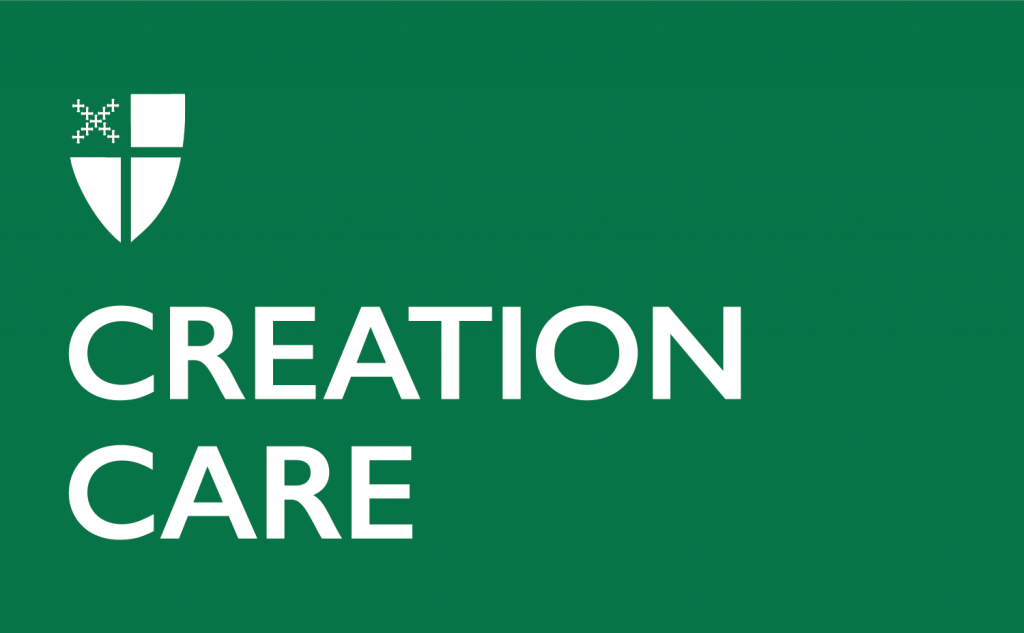Loss and Damage: Why these two words hold the key to a just transition in a warming world
By Dr. Lisa Graumlich
Last month I learned that I was assigned to the “loss and damage workstream” as a delegate representing The Episcopal Church at the 26th UN Climate Change Conference of the Parties (COP26) in Glasgow. As a scientist who has spent her career studying the impacts of climate change, I thought, “Great –I know something about this that will be useful to our delegation.” It turns out that was a massively naïve assumption. I spent the first week of COP unpacking the meaning of those simple words – loss and damage –in the context of the international negotiations on the future of our planet. Their meaning is deep, contentious, and, in my opinion, our best hope for making a just transition to a world in which the threat of climate change is vastly reduced.
The concept of loss and damage has flown under the radar for most of us when we hear calls to action to address climate change. The high-level negotiations at COP26 center around many broad responses to climate change, often grouped within mitigation and adaptation. Mitigation refers to actions, such as building renewable energy infrastructure or cutting methane emissions, that slow the accumulation of greenhouse gases in the atmosphere. Adaptation, on the other hand, seeks to address the immediacy of climate impacts through actions such as building flood defenses, setting up early warning systems for cyclones, and switching to drought-resistant crops. Both mitigation and adaptation are necessary, urgent and at the top of the agendas at COP26.
But there’s a missing element. How do we think about, yet alone respond to, the losses we see around the world that defy economic valuation and easy remedies? During my first week at COP, leaders from Fiji, Samoa, and other low lying island nations (known within UN meetings as “Small Island States” and grouped into regional blocs such as the Alliance of Small Island States) described the devastating impacts of sea level rise.
Indigenous people from around the Arctic described how their towns are being destroyed by thawing permafrost and their land rights are threatened, ironically, by renewable energy projects.
Delegates from Kenya described the millions of people facing food insecurity and massive social disruption due to ongoing drought.
By all accounts, Madagascar is experiencing the world’s first climate change induced famine with families barely surviving by eating locusts and cactus leaves.
How do we quantify loss of livelihoods and erosion of culture? This is the essence of loss and damage: technically speaking, climate change impacts that cannot be avoided by adaptation or managed with our current tools of risk management. Through a human lens, loss and damage are the profound, permanent and irreversible losses to lives, livelihoods, homes and territory. They are the loss of culture and identity. Loss and damage is difficult for policy makers because the loss defies quantification in monetary terms. Loss and damage speaks to fundamental issues of equity: in most cases, it is happening to communities in Asia, Africa, and Latin America who are least responsible for the climate crisis.
Loss and damage should not have been news to me. As a member of the science community, for decades we have been forecasting the damage that we would see from climate change intensified storms as well slow-moving catastrophes, like drought and sea level rise. What I had failed to realize was that loss and damage was included as a distinct article in the 2015 Paris Agreement, separate from adaptation. In 2015, the voices of developing countries that have long stressed that loss and damage impacts that are “beyond adaptation” were finally heard. The Paris Agreement made a modest request to the international community: to establish a repository for information on insurance and risk transfer, in order to facilitate the efforts of countries to develop and implement comprehensive risk management strategies. The idea was that information sharing was the first step towards a comprehensive, funded strategy to compensate countries for loss and damage. To date, no action has been taken on Article 8, and, despite the financial pledges that have been in the news last week, not a single penny has been allocated for loss and damages.
As with all negotiations, words matter greatly here. Proposals to bundle loss and damage funding with the larger pot of adaptation funding misses the point. Dedicated loss and damage funding acknowledges that those countries who have contributed the lion’s share of greenhouse gases have a responsibility to address the profound impacts of those emissions on communities whose emission profiles can be measured in single digits.
As leaders from around the world opened COP26, I was struck by the words of Barbados Prime Minister Mia Mottley, “”Failure to provide critical finance for loss and damage is measured in lives and livelihoods. This is immoral.” Those words stayed with me, providing a lens through which to frame all that I have learned at COP. Much of the media coverage has been about whether or not we have the political will to reduce our emissions to cap global warming to 1.5C. High level political and business leaders have made pledges to steer the global economy towards that goal.
But there’s more to talk about here. As people of faith, who strive to be loving neighbors to all people, we cannot ignore the call from those on the front lines of climate impacts to speak the truth about loss and damage and to seek remedies at a scale to match the need. I am committed to learn more about the intricacies of loss and damage financing and bring this into the larger discussions of climate change response. I share with other faith leaders the conviction that loss and damage must be firmly embedded in what we demand of our political leaders. In order to ensure a just transition to a sustainable world, we need to meet the 1.5C targets and, at the same time, concretely address the inevitable losses that will occur to those on the front line of climate impacts. We need a vision of a 1.5C world in which justice prevails.

Dr. Lisa Graumlich is a climate scientist and dean emeritus of the College of the Environment, University of Washington. She has devoted her career to studying the causes and impacts of climate change. She is passionate about advancing solutions to the climate emergency that are informed by science, grounded in faith, and responsive to community needs and aspirations. She is a parishioner at Saint Mark’s Cathedral in Seattle where she seeks to build bridges between creation care ministry, restorative justice and systemic change. She is in a discernment process with hopes of deepening this ministry as an ordained deacon.

